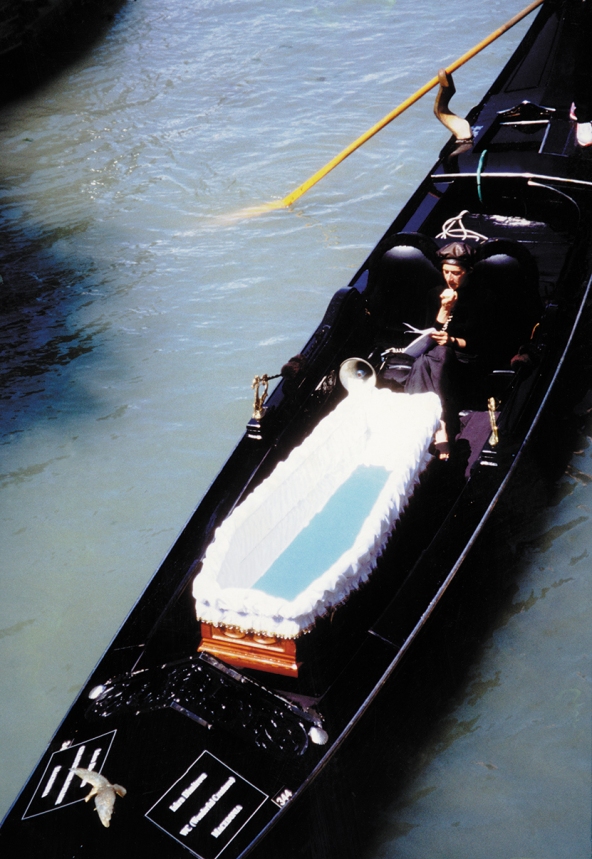
installation, site specific and performance, gondola, coffin, mirror
Unofficial Presentation of Macedonia, Outside the programme of the 48th Venice Biennale, 1999, curated by Nebojsa Vilic
text by Sonia Abadzieva
“… Wonderful Creatures, yet somehow changed, was unofficially representing the Republic of Macedonia at the Biennial in Venice (1999), in the form of a performance. The black coffin with gilded ornaments (from Skopje) was laid into a black gondola, also decorated with gilded motifs. Instead of a computer there was a mirror laid on the soft white shroud. The artist does not reflect in its shiny surface like Narcissus. This privilege was granted to the sky and to the luxurious Venetian architecture: the sky descends to the bottom of death, the buildings are sunk into the water that is swallowing the city. The liquid, “which is being returned to us by our mother” (Lamartine), reflects the floating object and its navigator. The subject turns her face to the ego: with a megaphone in her hands the artist in the gondola (steered by a gondolier) is the true narrator (in English and Italian) of the romantic story of the magic bugs.
The cruise along the channels of Venice from San Marco to Giardini and back is open to the inspection of the careful observers of the peculiarities of this city on water, that “charges the beauty with death” (E. A. Poe). The death seems to be the first sailor: at first the deceased were not buried, they were committed to the water: “death was the first and the last journey… that revived the most ancient of all passings”, Bachelard noted. The complex semantics of W. C., along with the already familiar to the reader consensually conceived/tailored antinomies (eternal-ephemeral, hedonistic-necrofillic, watery-fiery, me-the others), for the first time in the engagements of Dimitrova acquires a new connotation. With a dose of mimicry irony, she puts this performance in relation with the political-military turbulences in the Balkan in that period. In that view she comments the statement of the Financial Times critic, Peter Aspden: ”For half-way through the evening, an arresting sight momentarily snatched the attention of the first-night guests …it is not difficult to guess the inspiration behind this mordantly ironic piece of theatre. `At first sight the project may appear ludicrous… but it involves an emphatic aspect of commitment reflecting the protest against the current situation in the Balkans, and in Macedonia in particular`, explained the artist in a hand-out.” (1)
In: Iskra Dimitrova: Iskra (Spark) and Firefly: Poetics of the possible love between night and light in the intimate story of the circular correlations , Museum of Contemporary Art, Skopje, 2007, pp.21-22





